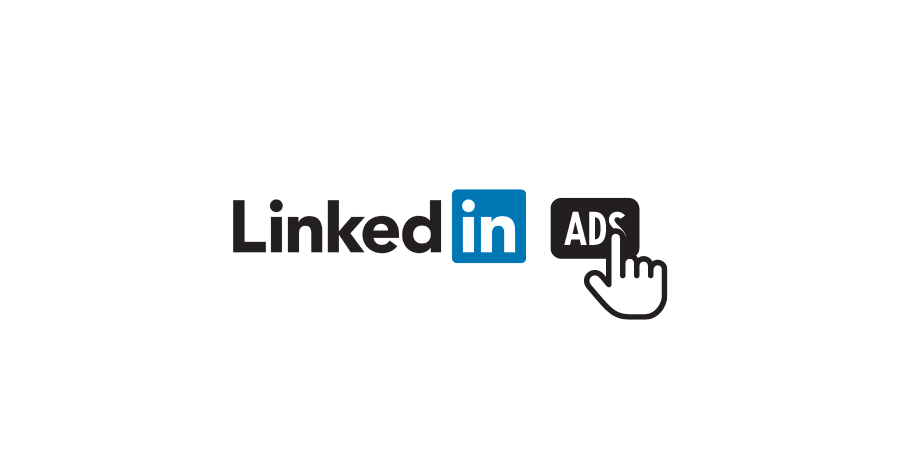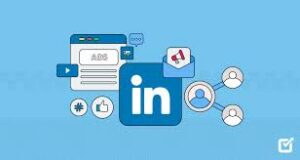What Are The Ultimate Guide to LinkedIn Ads in 2025?

The Ultimate Guide to LinkedIn Ads in 2025 is a form of paid advertising offered by LinkedIn, the world’s largest professional networking platform.
Ultimate Guide to LinkedIn Ads in 2025 ads allows businesses to strategically engage with specific professional audiences based on criteria such as job titles, industries, company size, and skills.
This precise targeting ensures marketing efforts are directed toward the most relevant individuals and generating leads.
With over 900 million members as of 2025, LinkedIn provides an unparalleled opportunity for B2B marketers, recruiters, and brand builders to connect with decision-makers, industry experts, and other professionals.
Unlike other social media platforms, LinkedIn’s professional focus makes it particularly effective for campaigns to foster business relationships and promote high-value products or services.
Ultimate Guide to LinkedIn Ads in 2025 is especially beneficial for businesses prioritizing lead generation, building brand awareness, and establishing thought leadership within their industries.
The platform’s sophisticated targeting capabilities and robust analytics tools empower advertisers to optimize campaigns effectively and reach their goals.
Whether you are launching a product, recruiting top talent, or establishing yourself as an industry leader, LinkedIn Ads provide a versatile solution for connecting with the right audience.
Table of Contents
Types of Linked Ads: Ultimate Guide to LinkedIn Ads in 2025

1. Sponsored Content
Ultimate Guide to LinkedIn Ads in 2025 Sponsored Content ads appear directly in the LinkedIn feed, blending seamlessly with organic posts, making them less intrusive and more engaging for users.
These ads are ideal for promoting blog posts, videos, or other content to increase visibility and engagement.
Sponsored Content can include single image posts, video content, or carousel formats, providing advertisers with flexibility in how they present their message.
Additionally, these ads are designed to encourage interaction, such as likes, comments, and shares, which can further amplify the reach and impact of your campaign.
This format is particularly effective for nurturing leads and driving traffic to specific landing pages, ensuring your content resonates with a professional audience.
2. Message Ads
Message Ads, or Sponsored InMail, deliver personalized messages directly to LinkedIn members’ inboxes, creating a highly targeted and private communication channel.
These ads are particularly effective for direct communication strategies, such as sending event invitations, promoting products or services, or nurturing potential leads through exclusive offers.
Since Message Ads land in a user’s inbox, they often feel more personal and engaging compared to other ad types.
They allow for customization and can include compelling CTAs, links to external resources, or RSVP options for events, making them versatile for various objectives.
Advertisers can also track open rates and engagement metrics, which help refine future campaigns for better performance.
3. Dynamic Ads
Dynamic Ads leverage LinkedIn’s powerful personalization capabilities to deliver tailored ads that resonate with individual users.
These ads automatically adapt to include user-specific details, such as their profile photo, name, or job title, creating a more engaging and relevant experience.
Dynamic Ads are frequently used to encourage actions like profile engagement, downloading gated content, following a company page, or even applying for job opportunities.
This format stands out because it blends seamlessly with LinkedIn’s professional environment, making users feel directly addressed.
Advertisers can use Dynamic Ads to boost conversion rates and create deeper connections by delivering messages that feel uniquely crafted for each viewer.
Additionally, they offer robust analytics for tracking performance, enabling marketers to refine their campaigns for optimal results.
4. Text Ads
Text Ads are simple, pay-per-click (PPC) or cost-per-impression (CPM) ads that appear in the sidebar of LinkedIn’s desktop interface.
Despite their simplicity, these ads are highly effective for driving targeted traffic to websites or landing pages.
Text Ads consist of a headline, brief text, and an optional image, which makes them easy to create and cost-efficient for businesses with limited budgets.
They are particularly well-suited for campaigns focused on lead generation, brand awareness, or promoting events.
The placement of Text Ads ensures visibility without being intrusive, making them a preferred choice for reaching LinkedIn’s professional audience in a non-disruptive way.
Additionally, advertisers can track performance metrics such as click-through rates (CTR) and conversions to optimize their campaigns over time.
5. Video Ads
Video Ads appear in the LinkedIn feed, offering a dynamic and visually engaging format to captivate audiences.
They are an excellent tool for storytelling, enabling brands to communicate their message with emotion and depth.
Video Ads are particularly effective for demonstrating product features, showcasing services, or sharing customer testimonials in a compelling manner.
They can also be used to highlight thought leadership, promote events, or introduce a brand to new audiences.
With the ability to include subtitles, these ads cater to users who browse without sound, ensuring accessibility and broader reach.
Additionally, LinkedIn’s video metrics allow advertisers to track performance, such as views, engagement rates, and audience retention, making it easier to refine future campaigns for maximum impact.
6. Carousel Ads
Carousel Ads allow advertisers to showcase multiple images or slides within a single ad, creating a dynamic and engaging experience for viewers.
This format is perfect for telling a multi-step story, such as walking users through a process or demonstrating the evolution of an idea.
It’s also highly effective for highlighting a range of products or services, enabling advertisers to showcase multiple offerings in one campaign.
Each slide can have its own image, caption, and call-to-action (CTA), encouraging deeper interaction.
Carousel Ads are versatile and can be used for various objectives, including driving website traffic, generating leads, and increasing brand awareness.
They also allow marketers to analyze engagement metrics for each slide, providing valuable insights to refine future campaigns.
LinkedIn Ad Objectives

When creating a LinkedIn ad campaign, selecting the right objective is a pivotal step in ensuring the success of your efforts.
LinkedIn provides a variety of ad objectives, which are grouped into three main categories: awareness, consideration, and conversion.
These objectives align with different stages of the marketing funnel, helping advertisers reach their goals efficiently.
Below is a detailed breakdown of these categories and their associated objectives:
Awareness
Brand Awareness:
Designed to increase visibility and recognition, this objective focuses on reaching a larger audience.
By selecting this, you can introduce your brand to new prospects and strengthen its presence within your industry.
It’s particularly useful for businesses looking to establish authority and familiarity with a professional audience.
Consideration
- Website Visits: Drive targeted traffic to your website or landing page.
This objective is ideal for businesses aiming to showcase their offerings or share in-depth resources like blogs and whitepapers.
. - Engagement: Boost interaction with your LinkedIn posts or company page.
By encouraging actions like likes, shares, and comments, this objective helps you build an engaged community and amplify your content’s reach.
. - Video Views: Increase views and engagement with your video content.
This is a powerful way to tell your brand story, showcase product demonstrations, or share customer testimonials in a format that captivates your audience.
.
Conversion
- Lead Generation: Collect leads directly on LinkedIn using pre-filled forms.
This objective simplifies the process for users, enabling them to submit their details seamlessly without leaving the platform, which increases conversion rates.
. - Website Conversions: Drive specific actions on your website, such as purchases, sign-ups, or downloads.
This objective ensures your campaign aligns with measurable business outcomes.
. - Job Applicants: Promote job postings to attract qualified candidates.
This is particularly effective for recruiters and HR teams looking to fill roles with top-tier professionals who match specific criteria.
.
By choosing the appropriate objective, you not only align your campaign with your broader business goals but also enhance the likelihood of delivering measurable results.
Each objective comes with tailored metrics, making it easier to evaluate success and adjust your strategies accordingly.
12 LinkedIn Ad Formats
- Single Image Ads: Use a single image with ad copy to convey a clear message.
. - Carousel Ads: Tell a story or showcase multiple offerings with a swipeable format.
. - Video Ads: Deliver engaging, dynamic content in the LinkedIn feed.
. - Message Ads: Send direct messages to users’ inboxes with personalized content.
. - Conversation Ads: Enable interactive, chatbot-style messaging to guide users.
. - Follower Ads: Encourage users to follow your LinkedIn company page.
. - Spotlight Ads: Highlight specific offers or products in a personalized way.
. - Content Ads: Drive downloads of gated content such as whitepapers or eBooks.
. - Job Ads: Promote open positions to attract the right talent.
. - Event Ads: Advertise webinars, conferences, or other events.
. - Text Ads: Use brief, text-based ads to drive clicks.
. - Document Ads: Share downloadable documents like reports or guides directly in the feed.
.
How to Set Up a LinkedIn Ad Campaign
Method 1: Using Campaign Manager
- Log in to Campaign Manager: Access LinkedIn’s advertising platform through your LinkedIn account.
. - Create a New Campaign: Click on the “Create Campaign” button and select the account you want to use.
. - Choose Your Objective: Pick an objective based on your campaign goals (e.g., Brand Awareness, Lead Generation).
. - Define Your Target Audience: Use LinkedIn’s targeting options to define your audience by criteria like location, job title, industry, and more.
. - Select an Ad Format: Choose from LinkedIn’s ad formats (e.g., Single Image, Video, Carousel).
. - Set Your Budget and Schedule: Define your daily or total budget and the duration of your campaign.
. - Create Your Ad Content: Upload visuals, write compelling copy, and include a strong call-to-action (CTA).
. - Launch Your Campaign: Review your settings and publish the campaign.
.
Method 2: Using LinkedIn’s API
For advanced users, LinkedIn’s Marketing API provides a powerful way to integrate with external platforms and tools to create, manage, and optimize campaigns programmatically.
This API enables advertisers to automate ad creation, adjust targeting parameters dynamically, and retrieve real-time performance data.
Businesses leveraging the API can integrate LinkedIn Ads with CRM systems, marketing automation platforms, and advanced analytics tools to streamline their marketing efforts.
Additionally, API access allows for bulk management of ad accounts, saving time and effort when handling multiple campaigns simultaneously.
By using LinkedIn’s API, marketers can implement sophisticated strategies such as dynamic audience retargeting,
A/B testing automation, and AI-driven bid optimization to maximize ad efficiency and ROI.
- Obtain API Access: Apply for access to LinkedIn’s Marketing Developer Program.
. - Set Up Your Integration: Use LinkedIn’s API documentation to configure your tools or software.
. - Automate Campaign Creation: Programmatically set objectives, targeting, ad formats, and budgets.
. - Monitor Performance: Use Campaign manager to track and optimize campaigns in real time.
.
LinkedIn Ads Best Practices
- Refine Your Targeting: Use precise targeting options to ensure your ads reach the right audience.
. - Test Multiple Ad Formats: Experiment with different ad formats to see which resonates best with your audience.
. - Focus on High-Quality Visuals: Use professional, attention-grabbing images and videos.
. - Write Compelling Copy: Craft concise, persuasive copy with a strong call-to-action.
. - Leverage Analytics: Use LinkedIn’s analytics tools to track performance and optimize campaigns.
. - Utilize A/B Testing: Test different versions of ads to identify what works best.
. - Optimize for Mobile: Ensure your ads are mobile-friendly, as a significant portion of LinkedIn traffic comes from mobile devices.
. - Set a Realistic Budget: Allocate enough budget to achieve meaningful results without overspending.
. - Engage with Comments: Monitor and respond to comments on your ads to build relationships.
. - Retarget with Matched Audiences: Use LinkedIn’s retargeting options to re-engage users who’ve interacted with your ads or website.
.
Frequently Asked Questions About LinkedIn Ads
1. How much do LinkedIn Ads cost?
LinkedIn Ads typically cost more than other platforms, with CPCs ranging from $5 to $15. However, the precise cost depends on your targeting, bid, and competition.
2. Are LinkedIn Ads worth it for small businesses?
Yes, especially for B2B companies. Small businesses can benefit from LinkedIn’s precise targeting to reach decision-makers.
3. What’s the minimum budget for LinkedIn Ads?
LinkedIn requires a minimum daily budget of $10 for campaigns.
4. How can I track the performance of my LinkedIn Ads?
Use LinkedIn’s Campaign Manager to monitor metrics like impressions, clicks, conversions, and cost per result.
5. Can I target specific companies with LinkedIn Ads?
Yes, LinkedIn allows you to target specific companies, job titles, and other professional attributes.
6. What is the LinkedIn Insight Tag?
The LinkedIn Insight Tag is a tracking code that you can add to your website to measure conversions, retarget website visitors, and gain audience insights.
7. How do I improve the click-through rate (CTR) of my LinkedIn Ads?
Focus on high-quality visuals, concise copy, and clear CTAs. Regularly test and optimize your ads.
LinkedIn Ads in 2025 offer an unparalleled opportunity to connect with professionals and decision-makers across industries.
By leveraging LinkedIn’s advanced targeting capabilities and diverse ad formats, businesses can tailor their messaging to resonate with the right audience.
Understanding the different ad types, objectives, and best practices ensures that you can craft strategic campaigns that drive engagement, generate high-quality leads, and maximize return on investment.
With continuous innovations and data-driven insights, LinkedIn Ads remain a powerful tool for brands aiming to establish authority, nurture professional relationships, and achieve their marketing goals in an increasingly competitive digital landscape.






